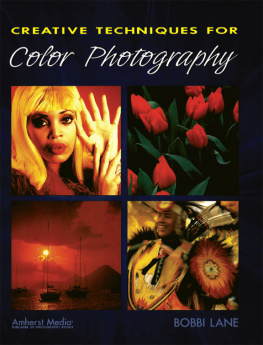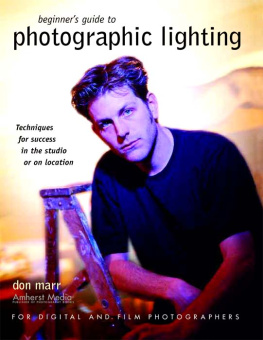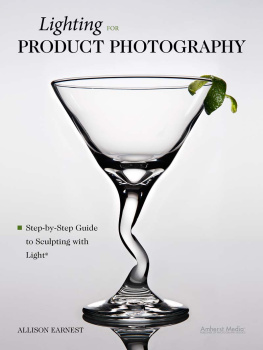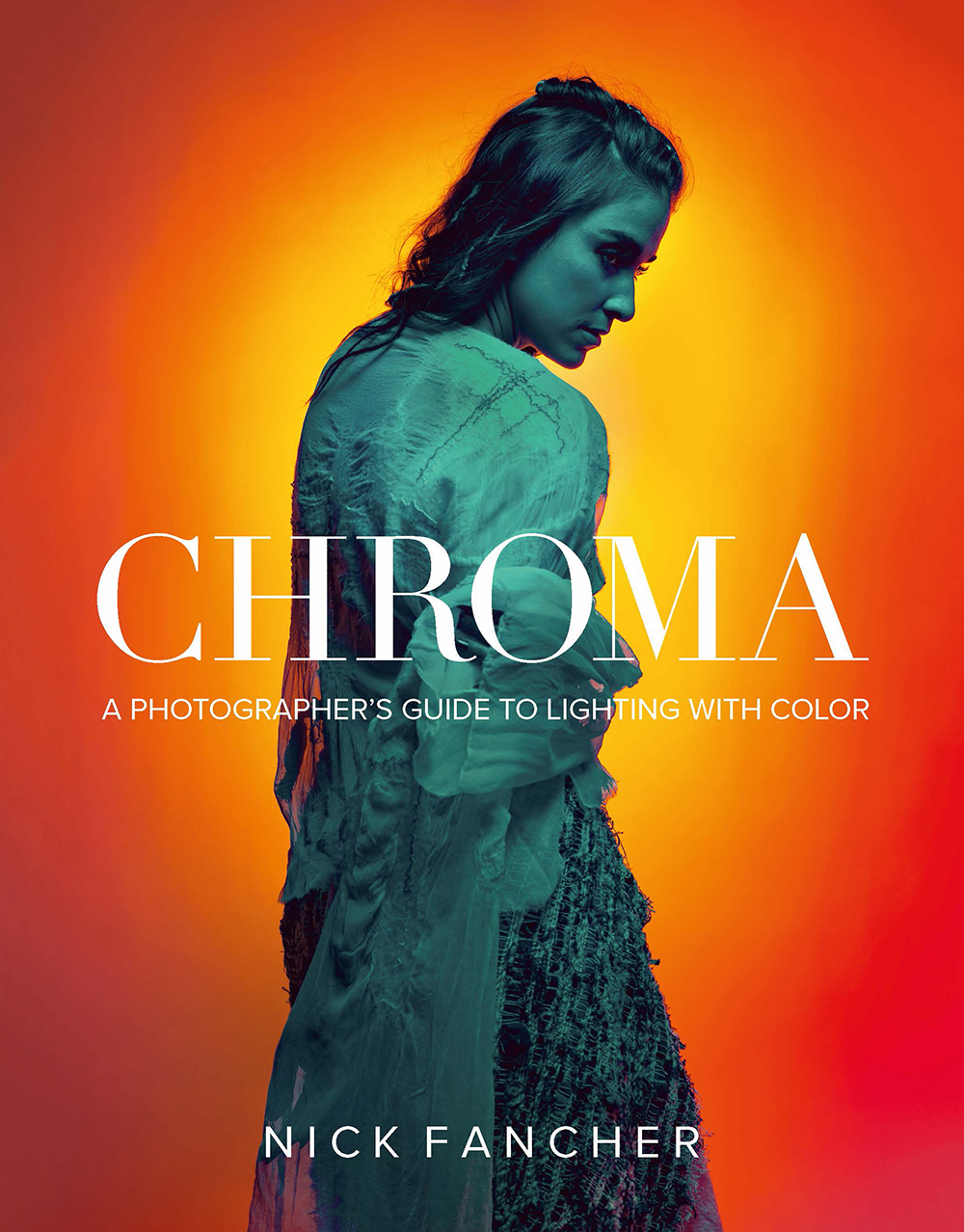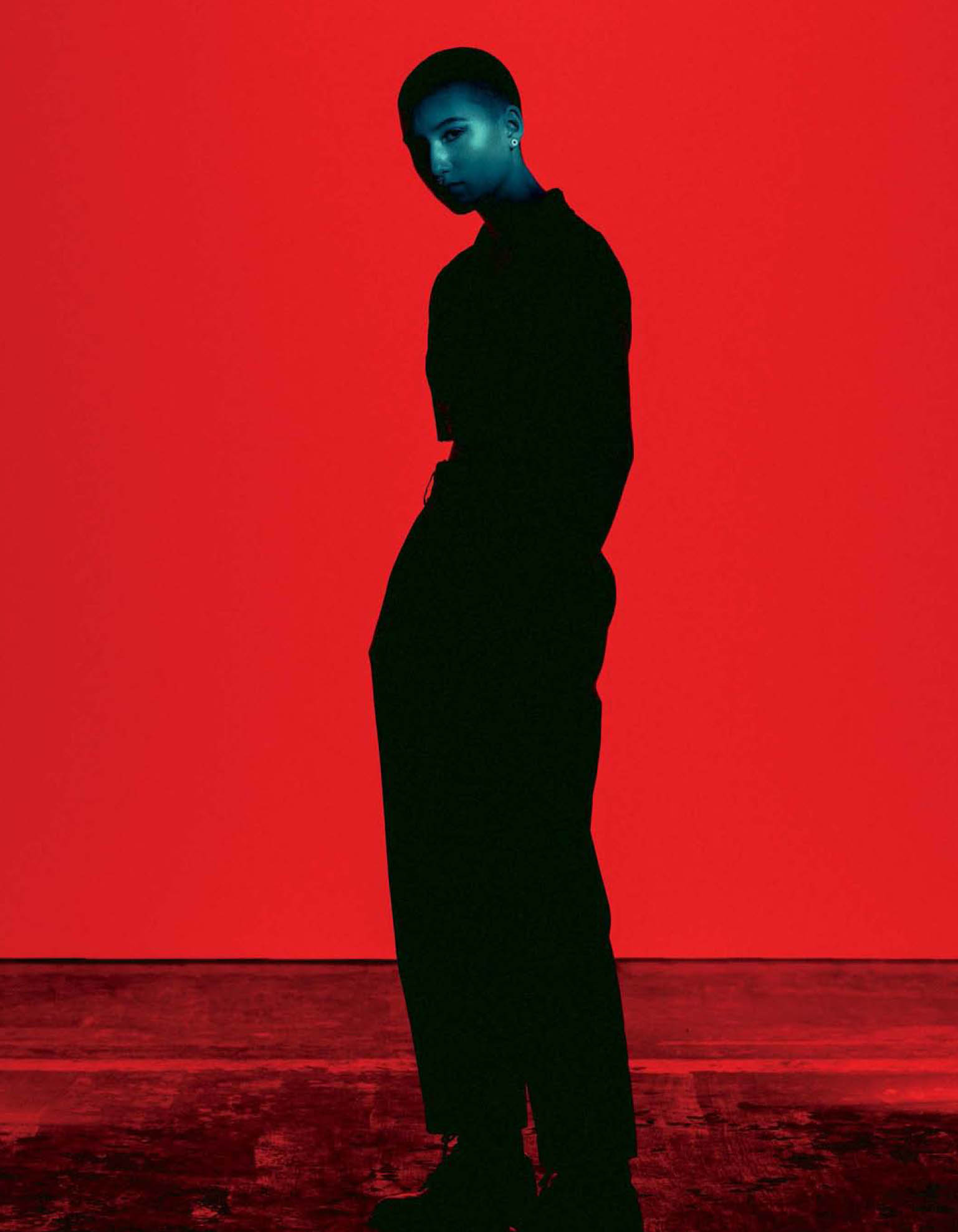CHROMA
A PHOTOGRAPHERS GUIDE TO LIGHTING WITH COLOR
NICK FANCHER
CHROMA
A Photographers Guide to Lighting with Color
Nick Fancher
nickfancher.com
Project editor: Maggie Yates
Project manager: Lisa Brazieal
Marketing manager: Mercedes Murray
Copyeditor: Maggie Yates
Proofreader: Patricia J. Pane
Interior design and composition: Kim Scott, Bumpy Design
Cover design: Nick Fancher and Kim Scott, Bumpy Design
Front cover image: Nick Fancher
ISBN: 978-1-68198-310-3
1st Edition (1st printing, July 2018)
2018 Nick Fancher
All images Nick Fancher unless otherwise noted
Rocky Nook Inc.
1010 B Street, Suite 350
San Rafael, CA 94901
USA
www.rockynook.com
Distributed in the U.S. by Ingram Publisher Services
Distributed in the UK and Europe by Publishers Group UK
Library of Congress Control Number: 2017939951
All rights reserved. No part of the material protected by this copyright notice may be reproduced or utilized in any form, electronic or mechanical, including photocopying, recording, or by any information storage and retrieval system, without written permission of the publisher.
Many of the designations in this book used by manufacturers and sellers to distinguish their products are claimed as trademarks of their respective companies. Where those designations appear in this book, and Rocky Nook was aware of a trademark claim, the designations have been printed in caps or initial caps. All product names and services identified throughout this book are used in editorial fashion only and for the benefit of such companies with no intention of infringement of the trademark. They are not intended to convey endorsement or other affiliation with this book.
While reasonable care has been exercised in the preparation of this book, the publisher and author assume no responsibility for errors or omissions, or for damages resulting from the use of the information contained herein or from the use of the discs or programs that may accompany it.
This book is printed on acid-free paper.
Printed in China
ACKNOWLEDGEMENTS
I would like to thank my wife Beth, and my kids, Jack and Margot, for your grace, love, and support. You are the color in my life and I love you all more than I have words for. I want to thank all the willing subjects who collaborated with me, sitting patiently as I moved lights fractions of an inch, clicked off a shot, studied the back of my camera, moved the light another inch, and clicked again (often for hours on end). I want to thank Seth Moses Miller for always being there to lend a helping hand, and for taking nearly every behind-the-scenes photo in this book. I want to thank the talented and supportive staff at Rocky Nook for taking a chance on this book. Finally, I want to thank my readers and followers who motivate me to keep pushing myself. I share my techniques so that we can make the world more beautiful, one (colorful) frame at a time.
CONTENTS
Color is born of the interpenetration of light and dark.
Sam Francis
Light is therefore colour.
J. M. W. Turner
Rage, rage against the dying of the light.
Dylan Thomas, Do Not Go Gentle into That Good Night
INTRODUCTION
While I suppose nearly every book on photo technique teaches color photography (save for maybe a book about Ansel Adams Zone System), this book will delve into the many possibilities afforded to you once you begin implementing color into your lighting. Ive long been inspired and motivated by bold uses of vibrant colors by photographers such as Nadav Kander and Miles Aldridge. Kanders subtle use of color in the shadow portions of his portraits are just as powerful and exciting to me as Aldridges calculated, yet playful, color schemes in his fashion editorials.
After searching the market to find photography technique books that teach color use in photography, I discovered that there doesnt seem to be one solely devoted to the topic. Though there are certainly books that touch on using colored gels in photography, I was set on creating a one-stop shop for photographers on color theory and color exploration. I wanted to go as deep into color use as I could imagine, covering the whole gamut. Ive used colored gels in my lighting for years, but for this book I really wanted to immerse myself in color and go outside my normal comfort zone to see what I could learn in the process.
This book begins with color theory and some of the science behind color, and then moves quickly into creative uses of color, which is where well spend the majority of our time. Ill go over a variety of techniques, including mixing different light sources, using shutter drag, discussing light modifier options, using projectors in creative ways, and making in-camera multiple exposure. Hell, I even go over how to implement color into your black-and-white photography to gain more control over your images. Itll be a good time, I promise.
Why do two colors, put one next to the other, sing?
Pablo Picasso
All colors are the friends of their neighbors and the lovers of their opposites.
Marc Chagall
CHAPTER 1
COLOR THEORY
Color theory was one of my favorite courses in college. I was fascinated to learn that there are theories behind creating compositional balance in art works. Much of how I use color in my images comes from the principles I first learned in that course. The funny thing is, the course wasnt even required for my majorit was a theory course designed for painting majors.
While entire books (and college courses) have been dedicated to the study and application of color theories, this book focuses on what I have found through my experience as a photographer to be the most fundamental, interesting, and most applicable concepts within this broad topic. The bulk of color theory has to do with the mixing of pigments, which doesnt concern photographers. Instead of reinventing the (color) wheel, I am going to narrow in on the aspects of color theory that pertain directly to photographers.
AN OVERVIEW OF COLOR THEORY
The human eye, although vastly more powerful than any camera lens, is still quite limited in its ability to perceive color. The range of colors our eyes can see is referred to as the visible spectrum. The visible specturm begins with white light, which is broken down into a mixture of red, green, and blue color wavelengths.
ADDITIVE AND SUBTRACTIVE COLOR
Color interactions fall under two categories: colored pigments and colored light. The mixing of colored pigment falls under the subtractive color model, seen in ) shows what happens when colored light interacts. Red, green, and blue overlap to create cyan, magenta, and yellow, which combine to make white, or colorless light. This, being a book about colored light, is where we will spend much of our time.



